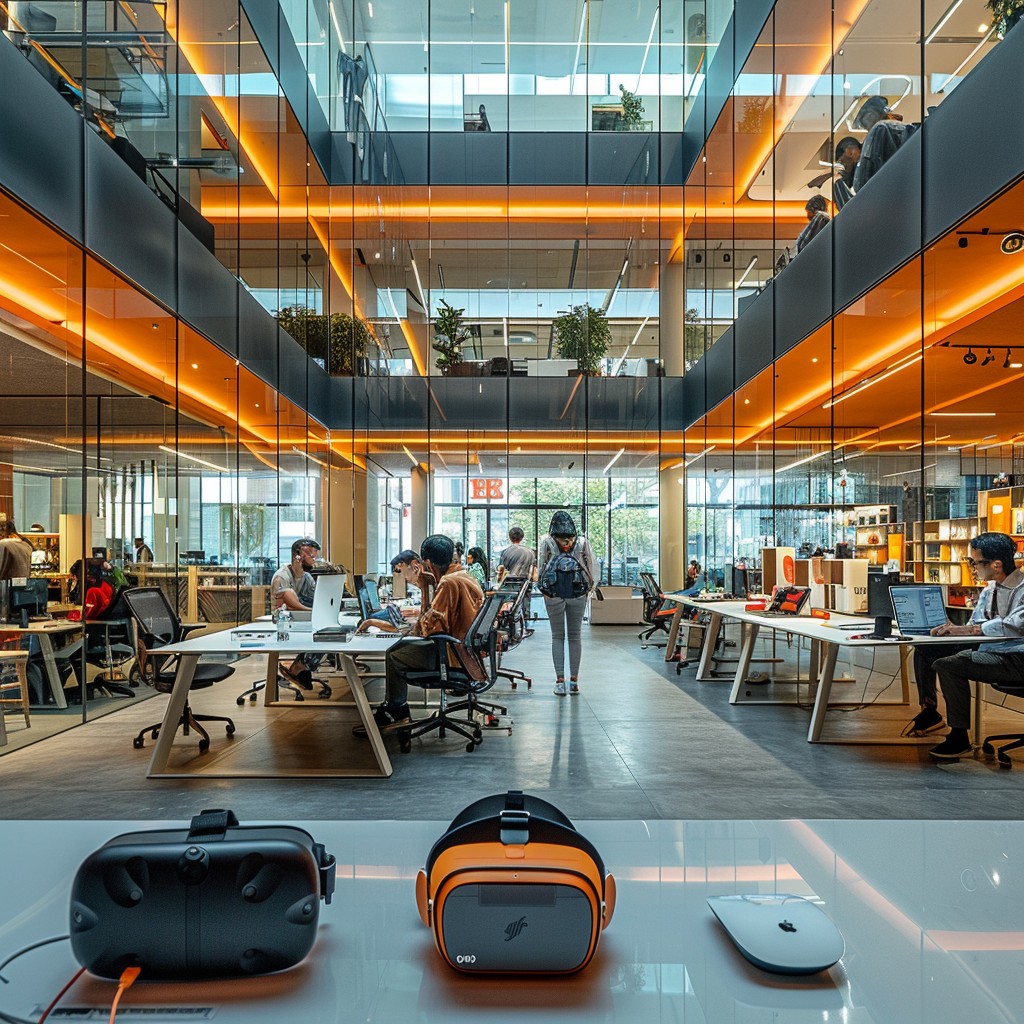When you think about office space, you might picture desks, computers, and a few meeting rooms. But the design and layout of an office do far more than simply organize where people sit—they directly impact how people feel, work, and even how much time they spend in the office. From fostering creativity to influencing leasing decisions, office design is becoming a strategic tool in the commercial real estate world.
Let’s dive into how the psychology of office space design can drive productivity and impact leasing decisions in today’s competitive market.

1. The Power of Open vs. Closed Spaces: Finding the Right Balance
Open office layouts became a trend, promoting collaboration and breaking down walls—literally. However, they’re not always a one-size-fits-all solution. The psychology behind open spaces can be both a blessing and a curse.
- Boosting Collaboration: Open spaces encourage communication, quick decision-making, and a sense of unity. Employees can easily bounce ideas off one another, leading to innovative thinking. For tenants in creative industries, this layout might be a key selling point.
- The Need for Quiet Zones: While open layouts foster collaboration, they can also create distractions. Employees in need of focus often seek quiet zones or designated private areas. A well-balanced office offers a blend of collaborative spaces and quieter, private areas where employees can focus without interruption.
Key takeaway for leasing decisions: Companies will look for flexible office designs that offer both collaboration hubs and private spaces, knowing that productivity hinges on striking the right balance.
2. Natural Light: A Mood and Productivity Booster
Natural light is one of the most powerful psychological tools in office design. Studies show that exposure to natural light can improve mood, reduce stress, and increase productivity. When people feel more connected to the outdoors, they’re more energized and focused.
- Mental Health Benefits: Employees working in well-lit environments report higher levels of job satisfaction and fewer feelings of burnout. This makes natural light a priority for businesses seeking long-term retention and well-being for their staff.
- Attracting Tenants: When leasing office spaces, tenants often prioritize natural light as a feature that enhances the overall work experience. Large windows and smart use of sunlight make a space feel more open, inviting, and modern.
Key takeaway for leasing decisions: Properties with ample natural light are more appealing to tenants who understand the direct correlation between well-lit environments and employee well-being.
3. Biophilic Design: Bringing Nature Indoors
The idea of biophilic design—incorporating elements of nature into the office—has grown popular in recent years. The presence of plants, water features, and natural materials (like wood and stone) can improve concentration, reduce stress, and create a calming work environment.
- Psychological Benefits: Biophilic design reduces anxiety and boosts creativity. A workspace that mimics the natural world can make employees feel more relaxed and engaged in their work.
- Leasing Appeal: For companies that emphasize sustainability and wellness, biophilic design is a major attraction. It signals a forward-thinking approach that aligns with modern values, increasing the property’s leasing potential.
Key takeaway for leasing decisions: Office spaces that feature biophilic elements are more likely to attract tenants looking for a refreshing and health-focused environment.
4. Layout Flexibility: Adapting to Evolving Needs
The COVID-19 pandemic drastically shifted how people work. As a result, companies now seek office spaces that offer flexibility—areas that can be quickly adapted to meet changing needs.
- Flexible Workstations: Having multi-use areas or easily reconfigurable spaces allows employees to move between solo tasks and team collaborations without being confined to one desk. This enhances overall satisfaction and efficiency.
- Tenant Flexibility: From hot-desking to modular furniture, businesses are looking for office layouts that allow for dynamic use. Properties with flexible designs are more likely to meet the changing demands of companies navigating hybrid work models.
Key takeaway for leasing decisions: Tenants will favor spaces that offer flexibility, making it easier to adapt the office to shifting work patterns and team sizes.
5. The Impact of Color Psychology
Colors affect emotions, energy levels, and productivity. Understanding how different hues influence behavior can help design an office space that enhances mood and performance.
- Blues and Greens: These calming colors promote focus and concentration, making them ideal for areas requiring deep thinking.
- Reds and Yellows: These are more energizing colors, which can stimulate creativity and enthusiasm, especially in collaborative areas.
- Neutrals: Warm, neutral tones create a sense of comfort and coziness without overwhelming the senses.
Key takeaway for leasing decisions: Companies will seek office spaces with color schemes that align with their corporate culture and the emotional needs of their workforce.
6. The Role of Amenities: More Than Just Office Space
Today’s workforce values amenities like fitness centers, cafés, outdoor areas, and wellness rooms. The psychology behind these spaces is simple: happier employees are more productive. These features also help companies attract top talent.
- Wellness and Social Spaces: Employees who feel that their well-being is a priority are more engaged and loyal. Providing wellness rooms, comfortable lounges, and access to healthy food options are all factors that boost morale.
- Attracting Long-Term Tenants: Office properties that offer a range of on-site amenities are more attractive to companies who understand that a healthy, happy workforce is more productive and less likely to leave.
Key takeaway for leasing decisions: Tenants will seek properties with built-in amenities that promote work-life balance and cater to employee well-being.
Conclusion: Designing Spaces for Success
The psychology of office space design is an essential factor in both boosting productivity and influencing leasing decisions. By understanding how layouts affect mood, concentration, and collaboration, commercial real estate professionals can create environments that appeal to modern businesses looking for more than just a place to work. From biophilic elements to flexible workspaces and wellness amenities, the right office design can become a company’s secret weapon for success—and a landlord’s key to filling vacancies.


